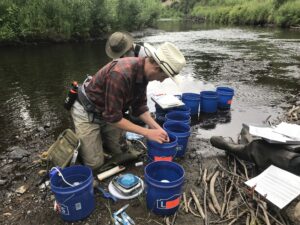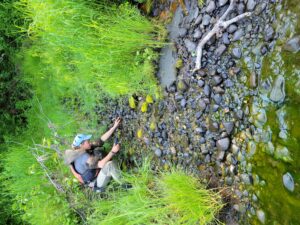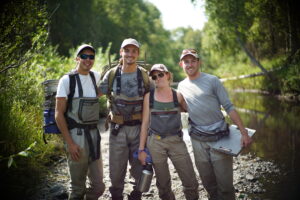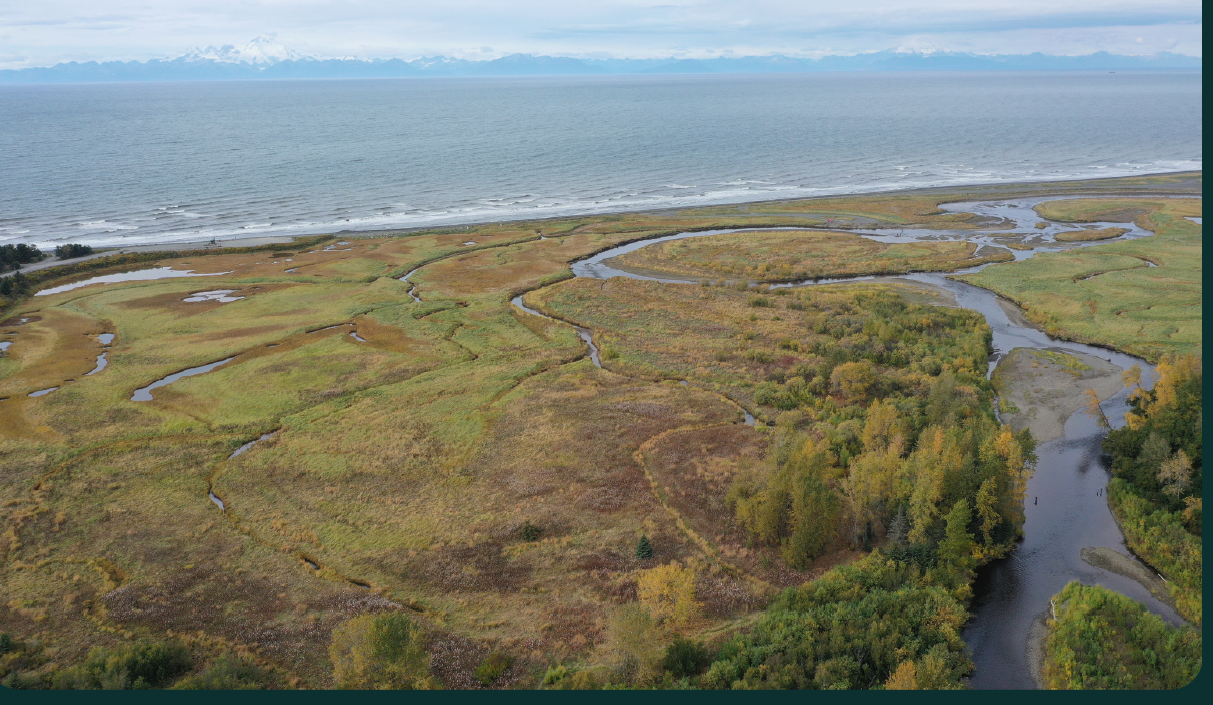
The Deshka River hosts five species of Pacific salmon and is home to one of the most productive fisheries in the Matanuska-Susitna (Mat-Su) basin, flows into the west side of the Susitna River in Southcentral Alaska, and is a popular salmon fishing area. It is off the road system and is semi-remote with access available by boat and plane. Primary tributaries are Moose and Kroto Creeks. It is also among the warmest salmon systems in the Mat-Su with summer water temperatures regularly exceeding thresholds considered stressful for rearing juvenile and spawning adult salmon. Based on available data, the Mat-Su has some of the warmest streams in Alaska.

Management actions to minimize the effects of warming on Deshka River salmon have been limited by a poor understanding of both their thermal requirements and the extent and distribution of thermally suitable habitats.
Many Partners have invested research into better understanding the Deshka River. Management actions to minimize the effects of warming on Deshka River salmon have been limited by a poor understanding of both their thermal requirements and the extent and distribution of thermally suitable habitats.
The U.S. Fish and Wildlife Services (USFWS), University of Alaska Anchorage (UAA), and Cook Inletkeeper have been working to close those data gaps by monitoring water temperature, streamflow and the distribution of juvenile Chinook and Coho salmon throughout the Deshka watershed; conducting long-term stream temperature monitoring, coupled with remote sensing data to identify cold-water refugia in the Deshka River system which may be critical habitat for salmon in a warming climate; and modeling to estimate how the extent and distribution of thermally suitable habitat has changed over time and how it will change in the future.

Additional partner efforts on the Deshka include the USFWS, Alaska Department of Fish & Game, and U.S. Geological Survey collecting data necessary to secure water rights on Deshka River tributaries so that as the region grows and demand for water resources increases or climate conditions change, water will be reserved to remain in the stream for the benefit of fish and aquatic life.
Cook Inletkeeper has provided real-time temperature monitoring on the Deshka River since 2013.
ADF&G operates a weir at mile 7 on the Deshka River, providing daily counts of migrating adult salmon. These data will be used to overlap timing of warm events with habitat use of salmon by life state. Among other benefits, ADF&G is collecting tissue samples to provide genetic identification of migrating fish.
The University of Alaska Fairbanks is conducting research on invasive Northern Pike in the Deshka River watershed, assessing how pike predation on juvenile salmon in the Deshka may change in response to warming water temperatures.

In an economic analysis commissioned by the Mat-Su Borough in 2007 and again in 2017, the economic benefits of sportfishing in the Mat-Su, including angler days, direct spending, and employment were reduced by approximately half during this time period. These findings underscored both sportfishing as an important component of the Mat-Su Borough’s economy and the importance of healthy salmon returns while maintaining fishing opportunities for both residents and visitors.
Although largely inaccessible by road, the Deshka faces potential changes in habitat protections and new potential development pressures. The Deshka River is one of six rivers in the Susitna River basin designated as a “Recreational River” under the Recreational Rivers Act, which was passed by the Alaska State Legislature in 1988. The subsequent Susitna Basin Recreational Rivers Management Plan was created in 1991 to ensure recreational access and maintain cultural and ecological characteristics of these rivers. During the 2021 Legislative Session, Senate Bill 97 was introduced to repeal the Susitna Basin Recreational Rivers Management Plan. The bill has not been voted on by both chambers, however, a governor-appointed Advisory Board has been formed to review the Management Plan. The state is separately considering approval of natural gas exploration licenses that would cover a large portion of the Deshka River in an area of potential coal bed methane deposits.



